Sol LeWitt
American
1928, Hartford, Connecticut
2007, New York, New York
Starting from the simple but radical new idea that an artwork's concept is more important than its form, Sol LeWitt helped revolutionize the definition of art in the 1960s. By the middle of that decade, LeWitt had rejected the dominant, psychologically charged abstract style of artmaking for impersonal, geometric forms. By repeating and varying a single principle, he created sculptural structures that were aesthetically satisfying even as their internal logic was pushed to the edge of irrationality.
LeWitt's procedure of repetition and variance is also the basis for his wall drawings. Each of these impermanent artworks consists of a set of the artist's instructions, something like a musical score, with the actual execution carried out by someone else.
Over the years, LeWitt's austere compositions gradually became more complex and sensuous, though they remained true to his original precepts.
In this clip from 1972, artist John Baldessari sings lines from Sol LeWitt's writings on conceptual art.
Audio Stories
What are instruction-based artworks?
transcripts
Español
普通话
Works in the Collection
-
Sol LeWittMaquette for Asymmetrical Pyramid #477
-
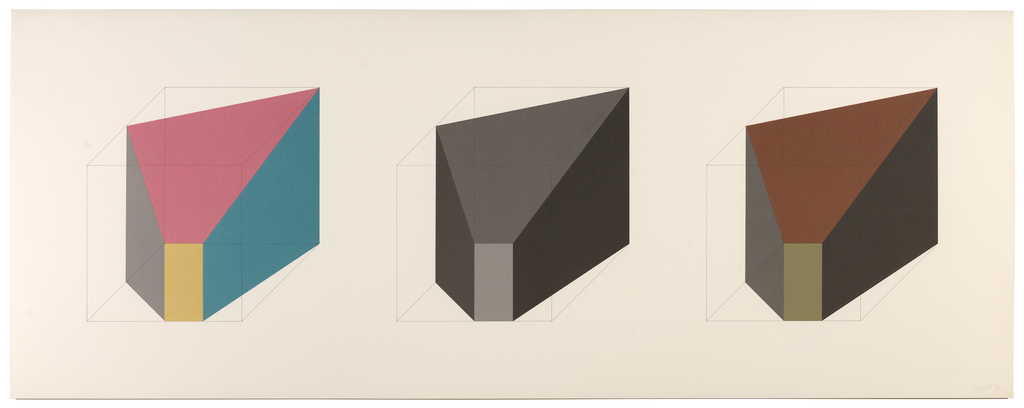 Sol LeWittForms Derived from a Cube in Color (Simple and Superimposed) & Black & Gray
Sol LeWittForms Derived from a Cube in Color (Simple and Superimposed) & Black & Gray -
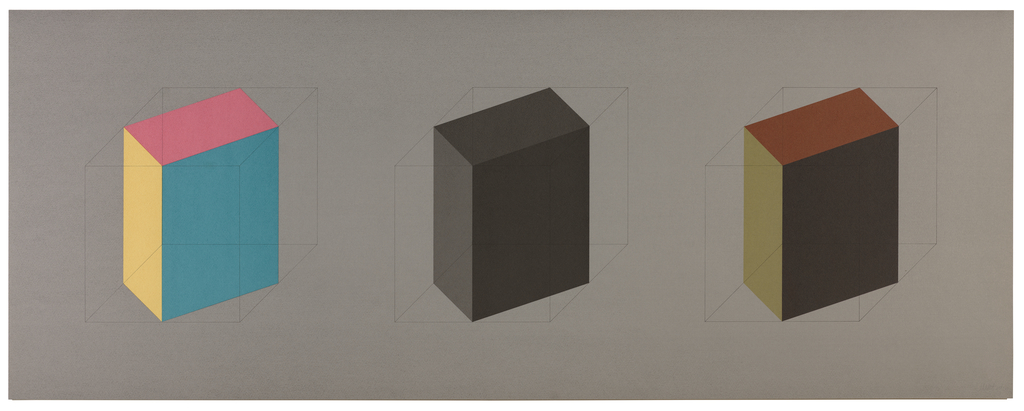 Sol LeWittForms Derived from a Cube in Color (Simple and Superimposed) & Black & Gray
Sol LeWittForms Derived from a Cube in Color (Simple and Superimposed) & Black & Gray -
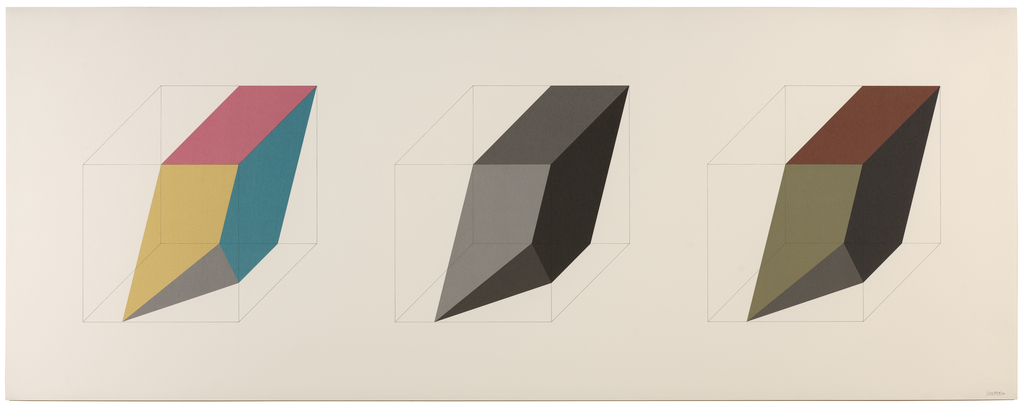 Sol LeWittForms Derived from a Cube in Color (Simple and Superimposed) & Black & Gray
Sol LeWittForms Derived from a Cube in Color (Simple and Superimposed) & Black & Gray -
 Sol LeWittForms Derived from a Cube in Color (Simple and Superimposed) & Black & Gray
Sol LeWittForms Derived from a Cube in Color (Simple and Superimposed) & Black & Gray -
Sol LeWittWall Structure, No. 4 (1 2 3 2 1)
-
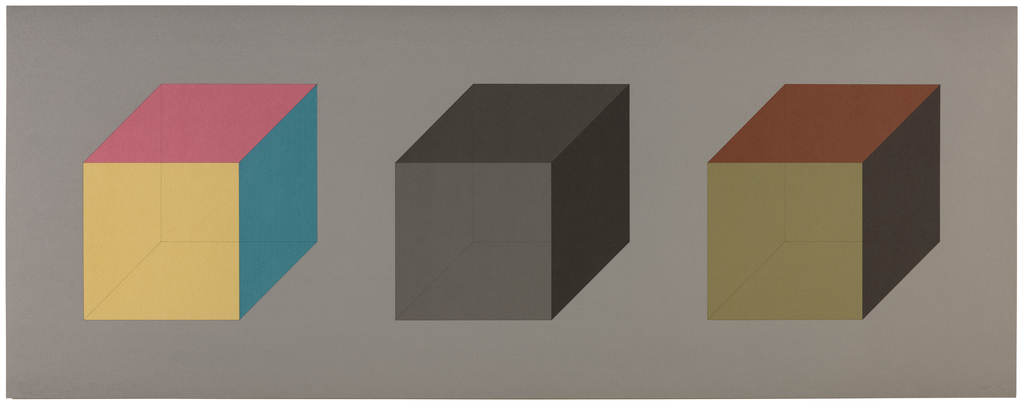 Sol LeWittForms Derived from a Cube in Color (Simple and Superimposed) & Black & Gray
Sol LeWittForms Derived from a Cube in Color (Simple and Superimposed) & Black & Gray -
Sol LeWittNine Geometric Figures (White Lines on Black), Colophon
-
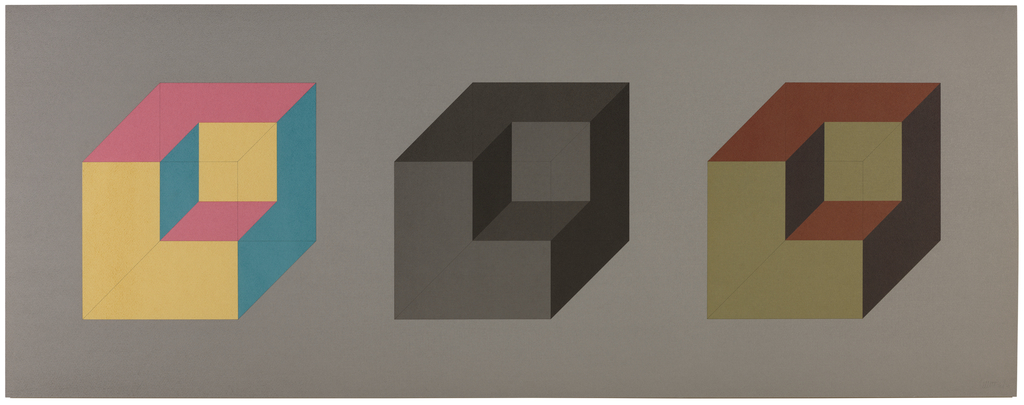 Sol LeWittForms Derived from a Cube in Color (Simple and Superimposed) & Black & Gray
Sol LeWittForms Derived from a Cube in Color (Simple and Superimposed) & Black & Gray -
 Sol LeWittMaquette for Cinderblock Structure, Four-Sided Pyramid
Sol LeWittMaquette for Cinderblock Structure, Four-Sided Pyramid -
 Sol LeWittHanging Structure #28C
Sol LeWittHanging Structure #28C -
Sol LeWittForms Derived from a Cube
-
Sol LeWittNine Geometric Figures (White Lines on Black)
-
 Sol LeWittWall Drawing #231 - The Location of a Quadrangle
Sol LeWittWall Drawing #231 - The Location of a Quadrangle -
 Sol LeWittWall Drawing 132
Sol LeWittWall Drawing 132 -
 Sol LeWittWall Drawing 477
Sol LeWittWall Drawing 477 -
 Sol LeWittSteel Structure
Sol LeWittSteel Structure -
 Sol LeWittForms Derived from a Cube, Plate #19
Sol LeWittForms Derived from a Cube, Plate #19 -
 Sol LeWittForms Derived from a Cube, Plate #20
Sol LeWittForms Derived from a Cube, Plate #20 -
 Sol LeWittForms Derived from a Cube, Plate #23
Sol LeWittForms Derived from a Cube, Plate #23
Please note that artwork locations are subject to change, and not all works are on view at all times.
Only a portion of SFMOMA's collection is currently online, and the information presented here is subject to revision. Please contact us at collections@sfmoma.org to verify collection holdings and artwork information. If you are interested in receiving a high resolution image of an artwork for educational, scholarly, or publication purposes, please contact us at copyright@sfmoma.org.
This resource is for educational use and its contents may not be reproduced without permission. Please review our Terms of Use for more information.